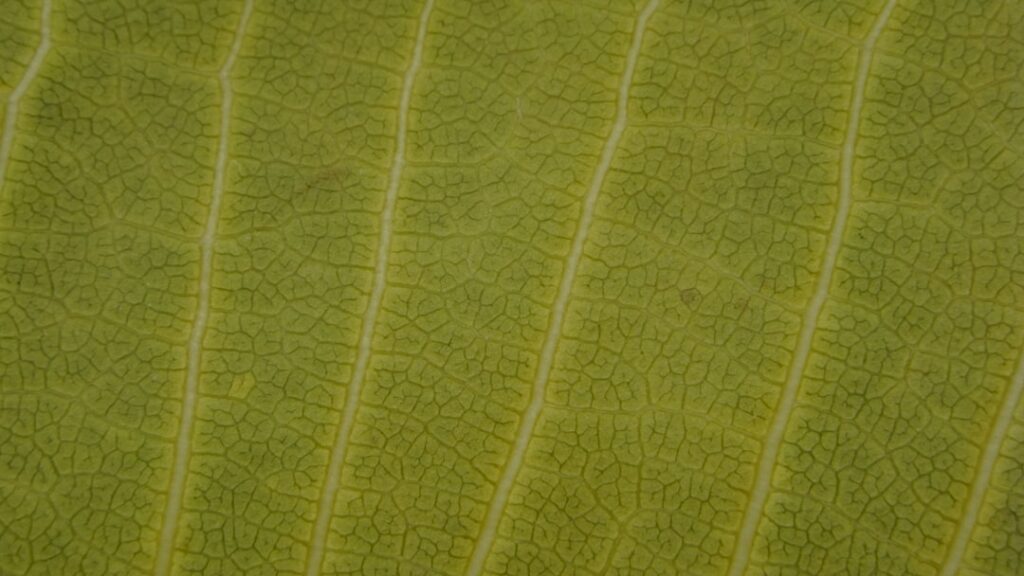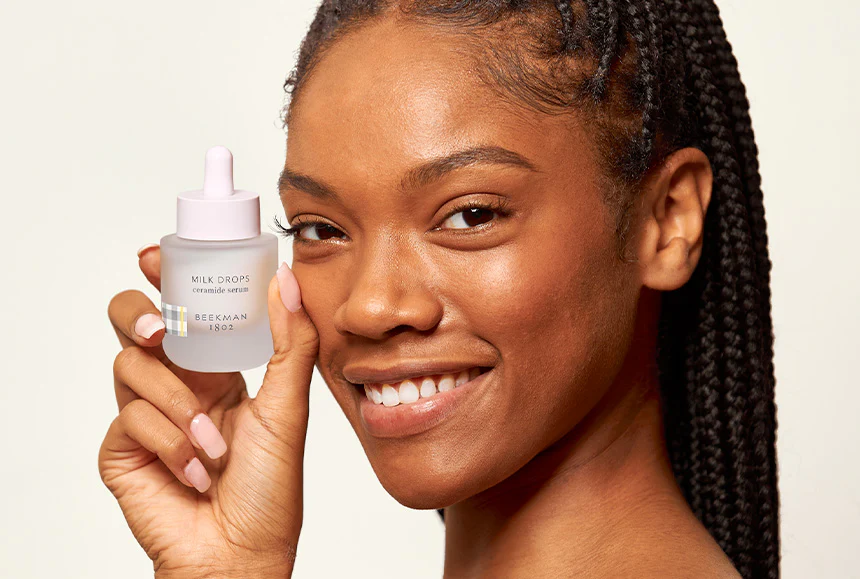The Revolution of Green Beauty: Changing Your Skincare Routine
Green beauty innovations are changing the cosmetics industry with sustainable, effective alternatives to conventional products. If you’re looking to find the latest eco-friendly beauty products, here’s what you need to know:
Top Green Beauty Innovations in 2024:
1. Waterless formulations – Solid shampoos, powder cleansers that eliminate water and reduce carbon footprint
2. Compostable packaging – Seed-embedded tubes, mycelium foams that break down in 45 days
3. Upcycled ingredients – Repurposed coffee grounds and fruit waste with potent bioactives
4. Microbiome-friendly products – Formulas that support skin’s natural ecosystem
5. Refillable systems – Forever bottles with concentrate refills reducing plastic waste
The beauty industry is experiencing a green metamorphosis driven by environmental urgency and consumer awareness. As the average American creates 4.4 pounds of trash daily, the need for sustainable beauty options has never been more critical.
Today’s green beauty goes far beyond simply using natural ingredients. It encompasses the entire product lifecycle – from ethically sourced raw materials to biodegradable packaging and formulations designed to benefit both your skin and the planet.
“It used to be that the term ‘green beauty’ was a revolution unto itself. Boy, have times changed,” notes one industry expert. What was once a niche market has evolved into a fundamental expectation, particularly among younger consumers who demand transparency about ingredients and production processes.

Basic green beauty innovations vocab:
– Clean beauty and wellness
– DIY natural beauty tips
– Green beauty subscription boxes
Why “Green Beauty” Matters in 2024
The concept of green beauty has undergone a remarkable evolution. What began as simply “natural” products has expanded to encompass a comprehensive approach to sustainability. In the early days, green beauty primarily focused on avoiding synthetic ingredients and harmful chemicals. Today, it represents a circular approach that considers every aspect of a product’s lifecycle.
Modern green beauty isn’t just about what’s in your products—it’s about how those ingredients are sourced, how the products are manufactured, packaged, used, and what happens when you’re done with them. This holistic view has transformed the industry from focusing solely on individual health to embracing planetary wellness as equally important.
Waterless & Zero-Waste Formulas: The Cornerstone Products
As our planet faces growing water scarcity concerns, the beauty industry is stepping up with waterless beauty solutions. Traditional beauty products can contain up to 80% water, requiring preservatives and adding significant weight and emissions during shipping.

By removing water, green beauty innovations create more concentrated formulas that last longer and require less packaging. Waterless formulations can cut packaging weight in half and eliminate the carbon footprint from transporting water.
These water-wise products align perfectly with Zero Waste Skincare principles. With EPA statistics showing each American creates about 4.4 pounds of trash daily, switching to solid or concentrated formulas becomes an easy way to reduce waste.
Trending Waterless Green Beauty Innovations
Solid beauty bars are having a moment – from shampoos and conditioners to facial cleansers and serums. These concentrated powerhouses typically last 2-3 times longer than liquid products while eliminating plastic bottles.
Concentrated serums and oils require just a few drops per application. Companies like Dr. Organic are leading the way, replacing water with organic Aloe Vera juice – a switch that earned them 13 awards in 2024.
Powder-to-paste products activate with water in your palm, shipping without preservatives and offering extended shelf life.
Dissolving sheet alternatives from Conserving Beauty use InstaMelt™ technology to transform single-use items like face wipes and sheet masks. After use, they simply dissolve with water, leaving nothing behind.
Compost-ready foams made from mycelium by companies like Ecovative replace plastic-heavy tools like makeup sponges, breaking down into compost in just 45 days.
How Zero-Waste Design Reduces Environmental Footprint
Zero-waste design creates a ripple effect of environmental benefits:
- Products without water are lighter and more compact, slashing transportation emissions by up to 50%
- Waterless formulas need fewer preservatives and stabilizers, simplifying formulations
- Concentrated products last significantly longer, meaning fewer items manufactured over time
- Compostable or biodegradable packaging stays out of landfills
To start your waterless beauty journey, try swapping liquid shampoo for a solid bar. Look for minimal, recyclable, or compostable packaging, and support brands with take-back programs. Small changes add up to meaningful impact, especially with products we use daily.
Upcycled & Plant-Based Ingredients Redefining Clean Formulations
In green beauty innovations, yesterday’s waste is becoming today’s skincare superstar. The beauty industry is embracing a circular approach by changing what was once destined for landfills into powerful, effective ingredients.

These upcycled ingredients frequently contain concentrated bioactive compounds that deliver impressive results. If you’re curious about exploring products with these innovative ingredients, our guide to Eco-Friendly Cosmetic Products offers plenty of options.
From Kitchen Scraps to Skincare Superstars
Coffee grounds still contain most of their antioxidants after brewing. When repurposed into skincare, they become excellent exfoliants that improve circulation, reduce puffiness, and fight free radical damage.
Fruit waste is another treasure trove. Discarded lemon peels are packed with citric acid and vitamin C, while apple pomace offers malic acid and polyphenols for gentle exfoliation and brightening.
The olive oil industry is contributing too – compounds like hydroxytyrosol from olive leaves and mill wastewater are finding new life as powerful antioxidants in skincare.
Even after the perfume industry extracts essential oils, the remaining flower petals and stems still contain beneficial compounds for nourishing skincare.
What makes this approach brilliant is that these upcycled ingredients often perform better than their virgin counterparts. The processing they’ve already undergone can make beneficial compounds more bioavailable and effective on skin.
Plant-Based Powerhouses You’ll See Everywhere
Alongside upcycled ingredients, several plant-based alternatives are revolutionizing skincare actives:
Bakuchiol from the babchi plant delivers retinol-like benefits without irritation. Studies show it improves fine lines, pigmentation, and elasticity while being gentle enough for daytime use and sensitive skin.
Algae extracts provide skincare miracles – blue-green algae contains amino acids that firm skin, while red algae offers exceptional moisture-binding properties and protection against environmental stressors.
Turmeric ferment takes this anti-inflammatory spice to new heights. Fermentation improves the bioavailability of turmeric’s active compounds, delivering superior brightening effects and calming irritated skin.
Finger Lime from Australia contains natural AHA pearls for gentle exfoliation, while Purple Tea from Kenya contains the rare GHG polyphenol with exceptional anti-aging properties.
These plant-based alternatives work with your skin’s natural ecosystem, supporting your skin’s microbiome while delivering impressive results – proving you don’t have to choose between effectiveness and sustainability.
High-Tech Green Beauty Innovations: Biotechnology, Microbiome & Personalization
The beauty industry is experiencing a fascinating change where cutting-edge technology meets eco-consciousness. This marriage of science and sustainability is creating some of the most exciting green beauty innovations – products that treat both your skin and our planet better.

Biotechnology Driving Next-Gen Green Beauty Innovations
Biofermentation is revolutionizing how we create skincare ingredients like hyaluronic acid, peptides, and ceramides. These lab-grown versions require significantly fewer resources than traditional methods – creating compounds in controlled environments with minimal environmental impact.
Scientists are engineering optimized versions of natural compounds with improved stability and effectiveness. Low-molecular-weight hyaluronic acid produced through biotechnology penetrates skin better than conventional forms, giving better results with less product.
Plant-based exosomes and growth factors activate skin’s repair mechanisms without requiring animal ingredients – a win for both effectiveness and ethics.
Green chemistry is redesigning chemical processes to reduce or eliminate hazardous substances. L’Oréal pioneered this with Pro-Xylane, derived from beech wood using water as the sole solvent instead of harmful chemicals.
The environmental benefits are substantial – biotech-derived ingredients typically require less water, energy, and land while producing fewer emissions and waste products.

Personalization Meets Sustainability
We’re moving beyond one-size-fits-all beauty into an era where technology creates solutions uniquely suited to your skin – with surprising environmental benefits.
AI-powered skin diagnostics analyze your skin’s unique characteristics and recommend precisely targeted products, helping you avoid purchasing unnecessary items that might end up unused.
Smart beauty devices like Trufacial adapt treatments to your individual needs without wasteful single-use products. Some cutting-edge systems even blend custom serums based on your current skin condition and environmental factors.
Even product dispensing is getting smarter, with technology that provides the exact amount needed, eliminating wasteful overuse and extending product life.
These personalization technologies help build minimalist routines with fewer, more effective products – saving your skin, wallet, and the planet simultaneously.
Why Microbiome-Friendly & Regenerative Products Matter
The latest frontier in green beauty innovations recognizes that working with nature yields better results than fighting against it.
Your skin has its own ecosystem of beneficial bacteria – the microbiome – that maintains skin health. Traditional products often contain preservatives and antibacterial ingredients that disrupt this balance. Microbiome-friendly formulations use prebiotics, probiotics, and postbiotics to nurture this ecosystem rather than strip it away.
Beyond sustainability, regenerative beauty actively improves ecosystems. Ingredients sourced through regenerative agriculture help restore soil health, increase biodiversity, and sequester carbon – creating positive environmental impact rather than merely reducing negative ones.
This shift toward microbiome-friendly and regenerative beauty represents a fundamental change – from fighting against natural processes to working in harmony with them, creating a holistic approach that honors both you and the earth.
Packaging That Heals the Planet: Compostable, Refillable, Blue Beauty Design
The beauty industry has a packaging problem. With face wipes and sheet masks seeing 15% annual growth, plastic waste continues to climb. But green beauty innovations in packaging are changing how we think about product containers.

Refillable & Closed-Loop Systems
Brands like Uni have created “forever bottles” – durable dispensers from recycled aluminum designed to last for years. Instead of tossing the entire package when empty, you purchase concentrated refills in minimal packaging.
Closed-loop systems take sustainability further. After using your product, you return the empty container to the manufacturer for professional cleaning, sterilization, and refilling – eliminating single-use packaging entirely.
Subscription refill services deliver product replenishments in minimal, often compostable packaging right to your door. In-store refill stations are also becoming more common, allowing you to bring your own containers and purchase just what you need.
These systems not only reduce waste dramatically but often save money in the long run, as refills typically cost less than buying completely new products.
Curious about brands that have eliminated plastic entirely? Our guide to Plastic-Free Skincare Brands showcases companies leading the sustainable packaging revolution.
Blue Beauty & Marine-Safe Innovations
While green beauty focuses on environmental impact broadly, blue beauty narrows in on protecting our oceans and waterways.
Conventional chemical sunscreens containing ingredients like oxybenzone and octinoxate have been linked to coral reef damage. Mineral-based alternatives using zinc oxide and titanium dioxide provide effective sun protection without harming marine ecosystems.
Many traditional beauty products contain hidden microplastics that eventually wash into waterways. Blue beauty products eliminate these harmful ingredients, protecting marine life from ingesting these tiny plastic particles.
Some forward-thinking brands are turning ocean pollution into a resource by recovering plastic waste from seas to create new packaging – solving two problems at once.
Water conservation plays a crucial role in blue beauty as well. Waterless formulations significantly reduce the freshwater footprint throughout a product’s lifecycle.
Sustainably harvested marine ingredients like algae provide powerful skincare benefits without damaging ocean habitats. These innovations recognize that our oceans – covering 70% of our planet’s surface – deserve special protection from the impact of our beauty routines.
Certifications, Transparency & Smarter Consumer Choices
With so many products claiming to be “green,” how do you separate truly sustainable green beauty innovations from clever marketing? Fortunately, there are reliable signposts to guide you.
Decoding Labels: How to Spot Authentic Green Claims
Ecocert is one of the toughest certifications to earn – products must contain at least 95% plant-based ingredients, with at least 10% being organic. NATRUE offers a three-tiered system that distinguishes between natural, partially organic, and fully organic formulations.
ISO 14001 certification tells you that a company’s entire environmental management system meets international standards. For animal welfare concerns, the Leaping Bunny logo guarantees no animal testing at any stage of development.
Many brands are going beyond traditional certifications with transparency initiatives. Some use blockchain technology that lets you trace ingredients from farm to bottle, while others add QR codes revealing detailed sourcing information.
“When brands are willing to reveal their entire supply chain, it shows they have nothing to hide,” explains one industry expert. “True sustainability isn’t just about the final product—it’s about every step along the way.”
For building a sustainable beauty routine, our guide to Sustainable Beauty Practices offers practical advice beyond product selection.
Action Steps for Eco-Conscious Shoppers
You don’t need to overhaul your entire routine overnight to make a difference. Start with these simple changes:
- Adopt a minimalist approach with multi-tasking products that serve several purposes
- Look for refillable systems that allow you to keep using the same container
- Support brands that practice radical transparency about their ingredients and processes
- Take a few minutes to research beyond marketing claims before purchasing
- Consider the full lifecycle of products you buy
Every purchase is essentially a vote for the kind of world you want to live in. By supporting truly sustainable brands, you’re helping drive further green beauty innovations throughout the industry.
For a deeper understanding of eco-friendly beauty products, our guides on Zero Waste Skincare and Plastic-Free Skincare Brands provide valuable insights for informed decisions.
Frequently Asked Questions about Green Beauty Innovations
What’s the difference between clean beauty and green beauty innovations?
Clean beauty focuses primarily on ingredient safety—eliminating potentially harmful substances like parabens and sulfates that might affect your personal health. Green beauty innovations take a more holistic approach, considering the entire lifecycle of a product from ingredient sourcing to disposal.
A product might be “clean” with safe ingredients but come in single-use plastic packaging. Conversely, a product might have sustainable packaging but contain synthetic ingredients that wouldn’t qualify as “clean.”
The most exciting green beauty innovations in 2024 bridge this gap, creating products that nurture both your skin and the environment throughout their journey from creation to disposal.
How do waterless products work without compromising performance?
Waterless formulations frequently outperform traditional products through clever formulation. Without water diluting the formula, active ingredients are present in higher concentrations, often delivering more potent results with less product.
Instead of plain water, many waterless formulas use hydrating botanical extracts, oils, or butters that provide moisture and add beneficial properties. Dr. Organic replaces water with organic Aloe Vera juice, adding soothing and anti-inflammatory benefits.
Many powder or solid formulations activate upon contact with water during use—like powder cleansers that transform into a creamy lather when wet. This “activation on demand” delivers fresh active ingredients without requiring preservatives during storage.
The result? Products that are often more stable, more potent, and gentler on sensitive skin—while being kinder to the planet too.
Which certifications guarantee truly sustainable skincare?
No single certification covers every aspect of sustainability, so transparent brands often display several complementary certifications.
For organic ingredient content, look for USDA Organic, Ecocert, or COSMOS certifications. For animal welfare, Leaping Bunny and PETA Cruelty-Free certifications confirm no animal testing occurred.
Fair Trade Certified products ensure ethical sourcing and fair compensation, while B Corp Certification evaluates a company’s entire social and environmental performance.
Rainforest Alliance certification ensures ingredients were harvested in ways that preserve biodiversity. EWG Verified products are free from chemicals of concern and meet strict transparency requirements.
Cradle to Cradle certification assesses products across five categories: material health, material reuse, renewable energy, water stewardship, and social fairness.
Some excellent small brands might not have all certifications due to cost barriers, so it’s worth looking beyond seals to research a brand’s actual practices and commitments.
Conclusion
The beauty industry is experiencing a profound change, with green beauty innovations leading the charge toward a more sustainable future. What began as a fringe movement has blossomed into a fundamental shift that’s redefining our daily beauty routines and their impact on both personal wellbeing and planetary health.
These innovations span every aspect of beauty products – from waterless formulations that conserve resources to zero-waste packaging that keeps plastic out of our oceans and landfills. The creativity behind these developments proves that sustainability and performance can absolutely go hand-in-hand.
Most encouraging is how these green beauty innovations often deliver superior results compared to conventional counterparts. Concentrated waterless formulas provide more potent active ingredients. Upcycled botanical extracts offer unique benefits that freshly-harvested ingredients sometimes lack. And biotechnology creates customized solutions that work with your skin while treading lightly on the planet.
The driving force behind this green revolution is you – the conscious consumer. As younger generations demand transparency and responsibility from brands, the entire industry is reimagining its practices from sourcing to disposal. Your purchasing decisions have tremendous power to accelerate positive change.
Challenges remain on this journey. Making sustainable beauty accessible across price points is still developing. Ensuring green claims are backed by genuine practices requires vigilance. But the remarkable progress already witnessed gives tremendous hope for the future.
At Beyond Beauty Lab, we’re committed to helping you steer this evolving landscape with trustworthy information and practical guidance. By making informed choices about products we use daily, we collectively create demand for continued innovation toward a more sustainable beauty industry.
The beauty of these green beauty innovations is that they allow us to care for ourselves while caring for our shared home. Small changes in our personal routines create meaningful impact when multiplied across millions of conscious consumers.
Ready to deepen your sustainable beauty journey? Explore our comprehensive guides to eco-friendly products and find options that align with both your values and beauty needs. Together, we can look good, feel good, and do good – for ourselves and for the planet we call home.







